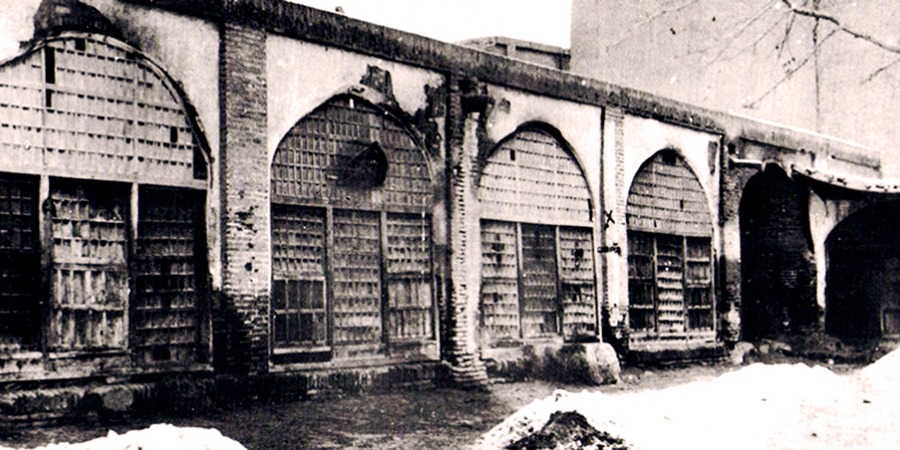
The barracks wall where the Báb was executed on 9 July 1850
AT THE Bahá'í Centre in Mumbai today, I joined over a hundred other members of the Bahá'í Faith in remembering the arrest, torture, imprisonment, and eventual execution of the Báb (born 1819) in Tabriz, Persia, on July 9, 1850. The Báb, whose name meant “the gate” in Arabic, was a Divine Messenger Whose brief mission on earth prepared humanity for the coming of Bahá’u’lláh, the Prophet-Founder of the Bahá'í Faith.
Prior to a special prayer read by Mrs. Zena Sorabjee at noon, we viewed a moving fifteen-minute film that narrated His martyrdom. Once again, I was reminded of the immense potency and meaning of this day, which Shoghi Effendi called a century later as “the most dramatic, the most tragic event” in the history of the Bahá'í Faith.
Bahai.org encapsulates the events that led to the death of the Báb (born 1819):
On May 23, 1844, in Shiraz, Persia, a young man known as the Báb announced the imminent appearance of the Messenger of God awaited by all the peoples of the world. The title Báb means "the Gate." Although Himself the bearer of an independent revelation from God, the Báb declared that His purpose was to prepare mankind for this advent. Swift and savage persecution at the hands of the dominant Muslim clergy followed this announcement. The Báb was arrested, beaten, imprisoned, and finally on July 9, 1850 was executed in the public square of the city of Tabriz. Some 20,000 of His followers perished in a series of massacres throughout Persia. Today, the majestic building with the golden dome, overlooking the Bay of Haifa, Israel, and set amidst beautiful gardens, is the Shrine where the Báb's earthly remains are entombed.The Martyrdom of the Báb is a major, non-working holy day for the members of the Bahá'í Faith. View a special audio-visual presentation prepared by the Bahá'ís of New York.

